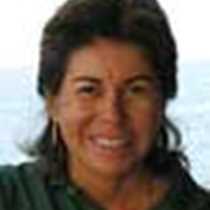Floreana Island
What an amazing experience to visit this island so rich in human history as well as natural history. Its official name in Spanish is “Santa Maria,” but it was also named after the first President of the Republic of Ecuador, General Juan Jose Flores, who claimed the islands for Ecuador in 1832 and sent the first Ecuadorian human colony to Floreana the same year. Its earliest name was an English one: Charles Island.
It’s the southernmost island of the group and the least populated among the four inhabited islands with approximately120 inhabitants. The name of its village is Puerto Velasco Ibarra, named after Dr. Jose Maria Velasco Ibarra, another former Ecuadorian President that did five terms and signed a special decree in the 30s, declaring the islands “special.”
Floreana received thousands of visitors during the 17th, 18th and 19th centuries, but all attempts at colonization failed until 1926, when a small group of Norwegians settled down to start a fishery industry. These were followed by the German colony, the first to really succeed, and whose descendants live on in Floreana and Santa Cruz.
Our adventure started by visiting the famous Post Office Bay to continue the tradition of picking up mail to be hand-delivered in some other part of the world. After the barrel, we went to visit “la Loberia” (or sea lions colony), a beautiful Zodiac ride to observe marine iguanas, frigates, Galapagos sea lions, mangroves, Opuntia cactus trees, common carpetweed plants.
The sun was shining, the color of the water was fantastic, and after an energetic breakfast we made our way to Champion Islet where we spent a couple of hours in the turquoise waters either snorkelling with white tip reef sharks, sea lions, king angelfishes, starfishes and many more unique creatures, or taking Zodiac cruises to look for rare birds as well as sea life.
In the afternoon we landed at Punta Cormorant, yet another wonderful site on Floreana, where we found flamingos and walked toward a marvellous white sand beach where we observed many sting rays hidden in the sand, golden rays and sharks.
At the end of the day, sunset marked the moment to go back aboard.
What an amazing experience to visit this island so rich in human history as well as natural history. Its official name in Spanish is “Santa Maria,” but it was also named after the first President of the Republic of Ecuador, General Juan Jose Flores, who claimed the islands for Ecuador in 1832 and sent the first Ecuadorian human colony to Floreana the same year. Its earliest name was an English one: Charles Island.
It’s the southernmost island of the group and the least populated among the four inhabited islands with approximately120 inhabitants. The name of its village is Puerto Velasco Ibarra, named after Dr. Jose Maria Velasco Ibarra, another former Ecuadorian President that did five terms and signed a special decree in the 30s, declaring the islands “special.”
Floreana received thousands of visitors during the 17th, 18th and 19th centuries, but all attempts at colonization failed until 1926, when a small group of Norwegians settled down to start a fishery industry. These were followed by the German colony, the first to really succeed, and whose descendants live on in Floreana and Santa Cruz.
Our adventure started by visiting the famous Post Office Bay to continue the tradition of picking up mail to be hand-delivered in some other part of the world. After the barrel, we went to visit “la Loberia” (or sea lions colony), a beautiful Zodiac ride to observe marine iguanas, frigates, Galapagos sea lions, mangroves, Opuntia cactus trees, common carpetweed plants.
The sun was shining, the color of the water was fantastic, and after an energetic breakfast we made our way to Champion Islet where we spent a couple of hours in the turquoise waters either snorkelling with white tip reef sharks, sea lions, king angelfishes, starfishes and many more unique creatures, or taking Zodiac cruises to look for rare birds as well as sea life.
In the afternoon we landed at Punta Cormorant, yet another wonderful site on Floreana, where we found flamingos and walked toward a marvellous white sand beach where we observed many sting rays hidden in the sand, golden rays and sharks.
At the end of the day, sunset marked the moment to go back aboard.




